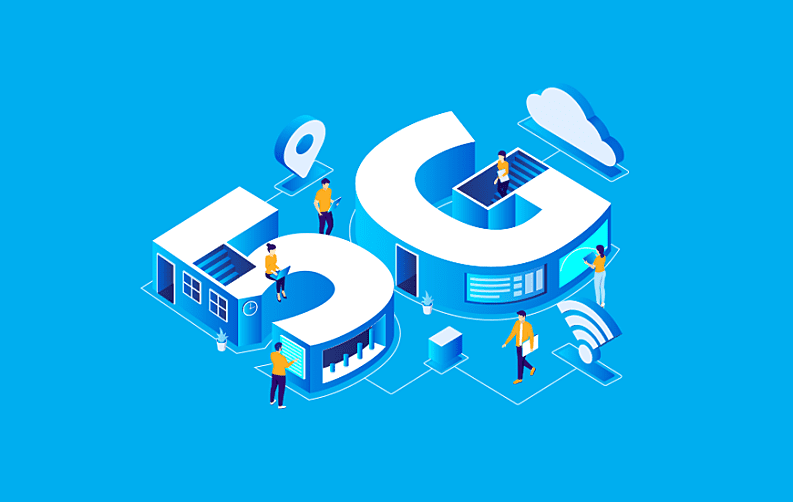
AI, cloud computing, smart cities, autonomous transport, the fourth industrial revolution - the world is rapidly adopting more connected technologies and preparing itself for the future technology trends. To prepare this massive leap to the next level of the Smart World, major tech companies and telecom providers are laying the infrastructure for 5G.
We have been getting more and more future technology trends - but how will it influence our future?
Brief Timeline of the 5G Network Rollout
After nearly a decade of making, 5G is finally becoming a reality. The rollout of the 5th generation of wireless Internet connectivity is one of the hottest topics today.
Like the previous networks, 5G appears to solve the particular tasks of the moment - handling higher data volumes and transmission speeds of an exponentially growing amount of connected devices and data exchange between them with extra speed and extra availability.
Sounds similar to the definition of the Internet of Things, right? No wonder that IoT is usually referred to as the biggest driving force behind the need for 5G, and digital transformation consulting services are focused on the next-gen wireless connectivity network.
How Did the 5G’s Journey Start?
2008 - NASA formulated a partnership with the Machine-to-Machine Intelligence (M2Mi) Corp, a platform for M2M and IoT development. This partnership was set up specifically to develop 5G technology.
In the same 2008, South Korea set up an R&D program for 5G mobile communication systems development.
2012 - Foundation of big research centers, designed to carry out detailed work on the 5G wireless network: NYU WIRELESS (New York University, USA); Mobile and wireless communications Enablers for the Twenty-twenty Information Society, or METIS (EU); iJOIN EU project, focusing on “small cell technology”, vital part of 5G technologies (EU); the University of Surrey's 5G research center (UK).
Professor Rahim Tafazolli, Director of the 5G Innovation Centre, said,
"The ethos of the center is not built on competition but cooperation. 5G will be achieved through global collaboration so that everyone will benefit from working to a single standard."
2013 - Massive investments into 5G network creation and rollout from Samsung and Huawei.
2014 - NTT Docomo does the first 5G experimental trials.
2016 - Verizon starts 5G testing in real-life situations, in collaboration with Ericsson, Intel, Nokia, Samsung, and Qualcomm.
2017 - 3rd Generation Partnership Project (3GPP), the group that creates the rules for wireless connectivity, issues the non-stand-alone standard for 5G, which allows 5G to coexist alongside 4G.
One year later, on June 2018, the 3GPP issues the standard for stand-alone 5G (officially, “Release 15”).
2020 - the 3GPP expects to declare a supplemental set of 5G standards called "Release 16."
So What do We Have Today From the Much-Discussed 5G Network Rollout?
Yes, it is already here. In the US, for example, AT&T, Verizon, T-Mobile, and Sprint have already launched their 5G networks.
Though it is not widely available. If a user wants to get connected to a 5G network, he or she needs a perfect combination of many factors: a 5G-compatible smartphone (as of September 2019, there is just a dozen released on the market) in their hand, and the right location where their carrier has already built out the 5th generation network.
As Tata Communications COO, John Hayduk mentioned,
“In Europe and the US, operator strategies that are not built around 5G are rare. It strikes me however that it is bold to assume that consumers will take up 5G the moment it’s available and that 5G will underpin the modern digital business from day one. The economics of providing 5G connectivity will make it difficult for mobile operators to drive costs low enough to make moving to 5G tempting for users.”
5G Characteristics
There are 2 key facts about 5G characteristics:
- Increased spectrum: The frequency bands for 5G are between 28 GHz and 60 GHz, referred to as millimeter Wave radio channels or mmWaves. mmWave frequencies have a very short connection range, that’s why the 2nd feature arrives.
- Small cell-based functioning: 5G work depends on a dense network of distributed base stations within the small cell infrastructure. Thus, more processing happens on the edge, which results in lower latencies and higher speed. The distributed nature of the 5G network allows deploying small cells anywhere in an ad hoc manner, keeping these newly installed units tightly connected with the rest of the network.
As a result, we have the following performance numbers:
- 10 to 100x data speed improvements, amounting up to 10Gbps.
- Up to 100% enhanced connection density, empowering an exponentially growing number of connected devices with access to the Internet from nearly any point.
- 1-millisecond latency, resulting in a faster response time.
- 1000x increased bandwidth per unit area.
How Will 5G be Developing?
- Fixed wireless access ( 2018-2019 onwards).
- Enhanced mobile broadband with 4G fall-back (2019-2021).
- Massive M2M / IoT ( 2021-2022).
- Ultra low-latency IoT critical communications (from 2023).
The International Telecommunication Union (ITU) described 3 usage scenarios for 5G:
According to ITU, here the possible areas, where 5G can be deployed with ease:
- Enhanced Mobile Broadband (eMBB): A faster and more reliable mobile broadband handles heavy traffic more efficiently, supporting HD video upload and download, as well as the functioning of technologies based on Augmented Reality (AR) and Virtual Reality (VR).
- Ultra-Reliable & Low Latency Communications (URLLC): Extremely low delay in 5G networks (less than a millisecond) becomes essential in mission-critical tasks. Remote surgery and consultation in the healthcare industry; autonomous vehicle communication in the auto industry - these are just some of the examples.
- Massive Machine-Type Communication (mMTC): Here, “massive” stands for a growing number of connected devices, “machine-type” - for machine-centric, rather than human-centric data transmission, and “communication” - for ultra-reliable and low-latency interaction between “things”. This sort of communication is the backbone of tomorrow’s world, supporting the connection of a great number of “things” to the Internet.
5G Impact on the IoT Industry
It goes without saying, that the arrival of 5G technologies addresses the evolution far beyond the mobile Internet - to massive IoT adoption and next-level Internet of Things software development.
Robert J. Topol, Intel's general manager for 5G business and technology, said,
"5G will be the post-smartphone era. Phones are the first place to launch because [they're] such an anchor in our lives from a connectivity standpoint."
The slow rollout of 5G services is actually an advantage for the IoT sector because its use cases already involve many complexities. But at the same time, IoT suppliers need to figure out how full-featured 5G could be deployed in future initiatives.
Even the telecom service providers will have to be in cahoots with the IoT suppliers so that these industries can deliver what the market is expecting out of them.



















